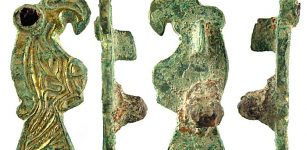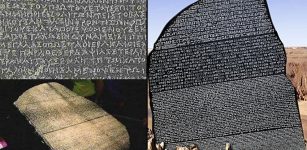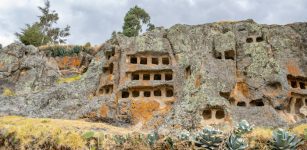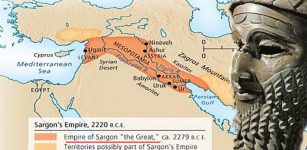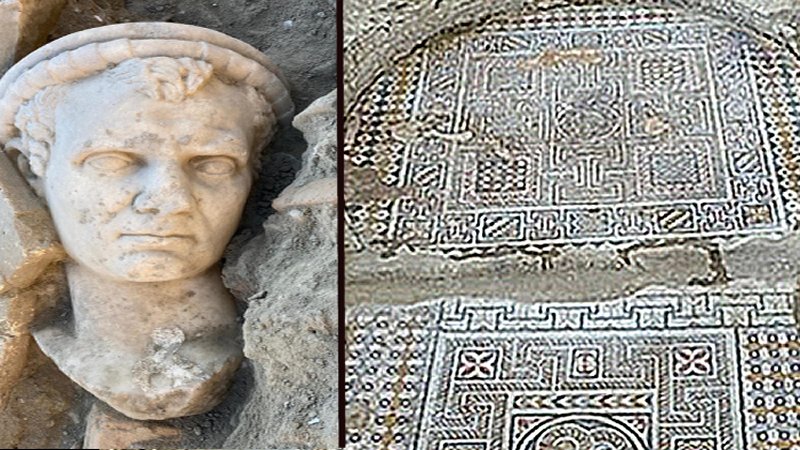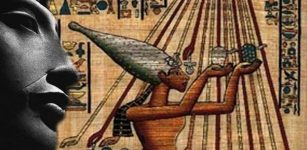The Red-Haired Race And The Atlantean Connection – Part 1 Of 3
Lara Lamberti – MessageToEagle.com – In 2011, the Swiss laboratory iGENETA reconstructed the DNA of the mummy of Tutankhamun. They discovered that more than half of the European population shares a common ancestor with the Egyptian child pharaoh. The genetic profile of Tutankhamun belongs to the haplogroup R1b1a2.
The Western European DNA of Tutankhamun
Haplogroup R1b (Y-DNA) is the dominant paternal lineage of Western Europe, with especially high incidence in Spain, Portugal, Western France and Ireland and in parts of sub-Saharan Central Africa (for example around Chad and Cameroon). R1b is also present at lower frequencies throughout Eastern Europe, Western Asia, Central Asia, and parts of North Africa, South Asia, and Siberia.
Today, in Egypt this haplogroup is found only in 1.1 per cent of the modern population, explains Roman Scholz who conducted the tests of iGENETA. For the scientists, there were many different possibilities of which DNA groups could have been found. R1b1a2 is being found in 70 per cent of modern Spanish and 60 per cent of modern French men, therefore the scientists think that the first ancestor lived in the Caucasus around 9,500 years ago and shifted towards South and West during the first migration period in 7000 BC.
King Tut: the child of brother and sister
Tutankhamun was the son of Akhenaten (formerly Amenhotep IV) and one of Akhenaten’s sisters, or perhaps one of his cousins As a prince he was known as Tutankhate. He ascended to the throne in 1333 BC, at the age of nine or ten, taking the throne name Nebkheperur. His wet-nurse was a woman called Maia, known from her tomb at Saqqara.

In 2008, it turned out that Tutankhamun’s parents were brother and sister: a team of researchers investigated the DNA research of Tutankhamun and the mummified remains of other members of his family.
The results from the DNA samples finally put to rest questions about Tutankhamun’s lineage, proving that his father was Akhenaten, but that his mother was not one of Akhenaten’s known wives. His mother was one of his father’s five sisters, although it is not known which one.
The team was able to establish with a probability of better than 99.99 percent that Amenhotep III was the father of the individual in KV55, who was in turn the father of Tutankhamun.
The young king’s mother was found through the DNA testing of a mummy designated as ‘The Younger Lady’ (KV35YL), which was found lying beside Queen Tiye in the alcove of KV35. Her DNA proved that, like his father, she was a child of Amenhotep III and Tiye; thus, Tutankhamun’s parents were brother and sister. Queen Tiye (Tia, Tyre) had blonde or red hair.
R1b1a2 and the myth of red hair in Egypt
So, was the lineage of pharaohs the same lineage that represents over 50 per cent of modern European men?
Interestingly, a mysterious race of redheaded mummies is being found all over the globe, including Egypt. Although some people argue that the blonde hair might in some cases be the result of mummification or that the people might have dyed their hair, the coincidence seems almost incredible, considering that the Irish are part of the same haplogroup as the lineage of the pharaohs.
Is there anything about redheads in ancient Egypt that has been documented?
Queen Hetop-Heres II, of the Fourth Dynasty, the daughter of Cheops, the builder of the great pyramid, is shown in the colored bas reliefs of her tomb to have been a distinct blonde. Her hair is painted a bright yellow stippled with little red horizontal lines, and her skin is white.
The Mystica trilogy describes the path of research performed by the journalist Daniel Walter. The first volume – “The Beginning” is the story of a group of people that follows the adventurous anthropologist Sarah Schwartz into the rainforest of the Amazon.
Sarah has a personal path to pursue and a mysterious task to achieve, always hoping to discover the truth about her father’s death and the meaning of a secret message given to her when she was a child.
Daniel Walter falls in love with Sarah. He and a handful people walk the path to the end with her, threatened by an eerie secret society whose members don’t hesitate to kill in order to get what they want.
Sarah, Daniel and their companions find themselves in an adventure that pushes them to the limits and gives them a feeling as if they were leaving the world as they know it. Learn more about the book
A book that mentions red hair in conjunction with ancient Egypt is James Frazer’s “The Golden Bough.” In it he states that red-haired men were burnt and sacrificed by the Egyptians:
“With regard to the ancient Egyptians we have it on the authority of Manetho that they used to burn red-haired men and scatter their ashes with winnowing fans, and it is highly significant that this barbarous sacrifice was offered by the kings at the grave of Osiris. We may conjecture that the victims represented Osiris himself, who was annually slain, dismembered, and buried in their persons that he might quicken the seed in the earth.”
Later in the book he elaborates on this:
“Again the theory that the pig, originally Osiris himself, afterwards came to be regarded as an embodiment of his enemy Typhon, is supported by the similar relation of red-haired men and red oxen to Typhon. For in regards to the red-haired men who were burned and whose ashes were scattered with winnowing-fans, we have seen fair grounds for believing that originally, like the red-haired puppies killed at Rome in the spring, they were representatives of the corn-spirit himself, that is, of Osiris, and were slain for the express purpose of making the corn turn red or golden.”
Given this information it’s interesting to note that we now know that many pharaohs of ancient Egypt were red-haired, including Ramses II, also known as Ramses the Great.
In fact the number of red-haired mummies unearthed seems strikingly disproportionate, especially given the climate in Egypt.
However, what is striking about Ramses II, who was the 3rd pharaoh of the 19th Dynasty, is that his father was Seti I.
Seti means “the follower of Seth”, who in Egyptian mythology is in fact the god who murdered Osiris.
Seth was a redhead.
The Atlantean connection
It is documented that red-haired people were known to many of the peoples of the ancient world, but they always constituted a minority in every population.
Their appearance in areas like Egypt and Peru surprises us for the climate, but the location in South America surprises us even more for the distance of the alleged source.
Did they really arrive from the Caucasus? Or did they come from Western territories, maybe from a sunken continent?
Plato was certainly not the only one who mentioned the existence of the mythical Atlantis. There’s in fact reason to believe that Plato gathered much of his knowledge as well as the tale of Atlantis from his visits in Egypt.
The Egyptians probably mentioned Atlantis in their writings – the writings about the mysterious land “Amentet”, the Land of the West.
Written by Lara Lamberti – MessageToEagle.com Contributor
Sources: The Myths and History of Red Hair, Burlington News, Science Frontiers.
James Frazer: The Golden Bough. England 1890.
Many thanks to José Da Silveira.
Image credits: finddisneyworld.com, gwydir.demon.co.uk, Eupedia
About the author:
Lara Lamberti – is an actress, writer, director and producer. She attended acting school as a teenager and quickly became a well known actress in Italy and abroad while attending the script writing classes of Riccardo Aragno in Rome. Lara attended the university in Berlin and Rome, studying first journalism and biology and later psychology and musicology. She is currently working on her Mystica project, a TV series about the world’s mysteries. For further information you may also see:






